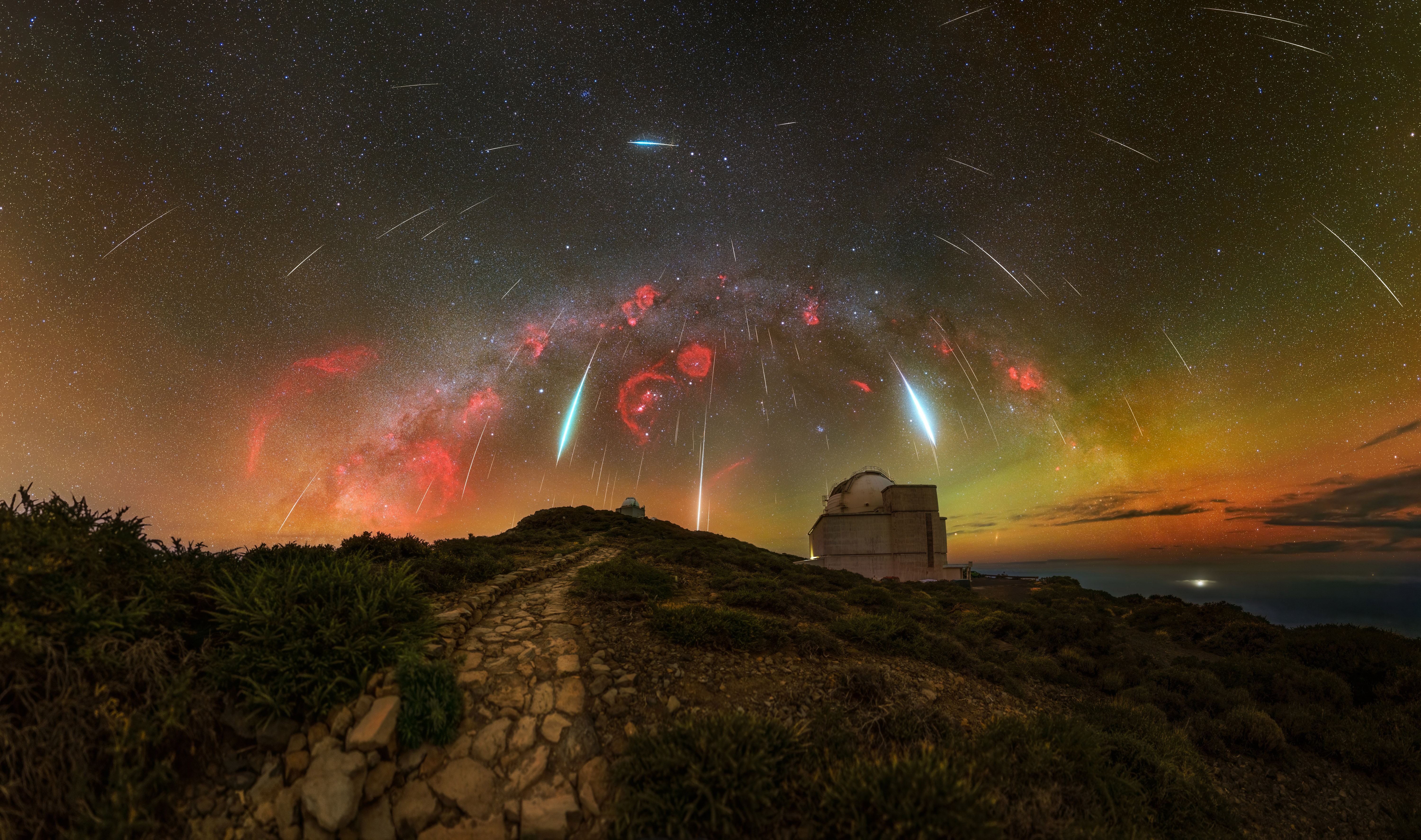On September 12, the Royal Observatory Greenwich will announce the winning shots of the Astronomy Photographer of the Year competition. But before the announcement, the team has shared with us a shortlist of some of the most evocative shots among the entries.
Picking them was not easy – there were over 3,500 entries by amateurs and professional photographers from 58 countries around the world. The competition has been run for 16 years and awards three people – a winner, a runner-up, and a highly commended prize – for each of the nine main categories and two special prizes. And there will be an overall winner who will take home a £10,000 prize.
The categories are people and space; skyscapes; aurorae; our Sun; our Moon; planets, comets, and asteroids; stars and nebulae; galaxies; and an award for people 16 years old or younger. The special prizes are the Sir Patrick Moore Prize for Best Newcomer and the Annie Maunder Prize for Image Innovation. The latter is awarded for the best-processed images from open-source data from established telescopes.
The competition is organized by the Royal Observatory Greenwich, with Liberty Specialty Markets and BBC Sky at Night Magazine. Below are some of our favorite entries in the shortlist with captions provided by the Royal Observatory Greenwich
Skyscapes
A Cosmic Firework: the Geminid Meteor Shower – This photograph of the Geminid meteor shower was taken under perfect conditions on La Palma. During the peak of the night, Sahner could easily spot two or three or more meteors per minute within the field of view. The panorama shows the entire winter Milky Way as seen from La Palma in RGB natural color with extra details in H-alpha.
Image Credit: © Jakob Sahner
Auroral Touch: the Milky Way’s Close Encounter – This image was taken in Castle Hill, New Zealand, facing south as the Milky Way set. Partway through the night, Hall-Fernandez noticed a faint glow growing stronger, though he was not expecting to see the Aurora Australis. As the aurora was very far away, only the deep reds were visible.
Image Credit: © Chester Hall-Fernandez
Galaxies
The Galaxy Devourer – CG4 (Cometary Globule 4) is a complex of nebulosity and dust with a very peculiar shape, located in the southern constellation of Puppis. The ‘head’ of the galactic worm has dimensions of about 1.5 light years. This image is the result of the work of a team of astrophotographers: they joined forces to rent the powerful Newtonian 500-mm telescope from Chilescope service, processing the raw files and then voted for the best images.
Image Credit: © ShaRa
Aurorae
Arctic Dragon – This impressive aurora, which seemingly takes the form of a dragon, was the result of a geomagnetic storm (level G2) generated by a coronal mass ejection. The photo was captured at the Arctic Henge, which was one of the only places in Iceland with clear skies that night.
Image Credit: © Carina Letelier Baeza
A Night with the Valkyries – A view of the Eystrahorn Mountain on the night of a KP7 storm (a strong geomagnetic storm that can cause aurorae and upset electrical power systems). The intensity of the storm resulted in the impressive range of colors in the sky.
Image Credit: © Jose Miguel Picon Chimelis
Our Sun
Solar Pulsation – This image captures a sunspot erupting at the edge of the Sun where material is ejected from an active volcano. Dual filters were used to improve contrast and the stereoscopic effect.
Image Credit: © Wenlian Li
Total Solar Eclipse – Gwenaël Blanck traveled to Australia in April 2023 to see the 62-second-long total solar eclipse. In this collage he shows the corona and the pink chromosphere, the prominences and Baily’s beads, chinks of sunlight that shine through due to the Moon’s rugged landscape. The image is made of seven superimposed pictures, one overexposed for the background and six others for the chromosphere and prominences.
Image Credit: © Gwenaël Blanck
The Palette of the Himalayas – During the Spring Festival, the Sun and altostratus clouds acted together to create this huge corona, soaring above the Himalayas. The result is an enormous color palette above the snowy peaks.
Image Credit: © Geshuang Chen
Source Link: Cosmic Fireworks, Close Encounters Among Spectacular Shortlist For Astronomy Photographer Of The Year
